How America moved in the 1800s: incredible history of streetcars, in photos
All aboard
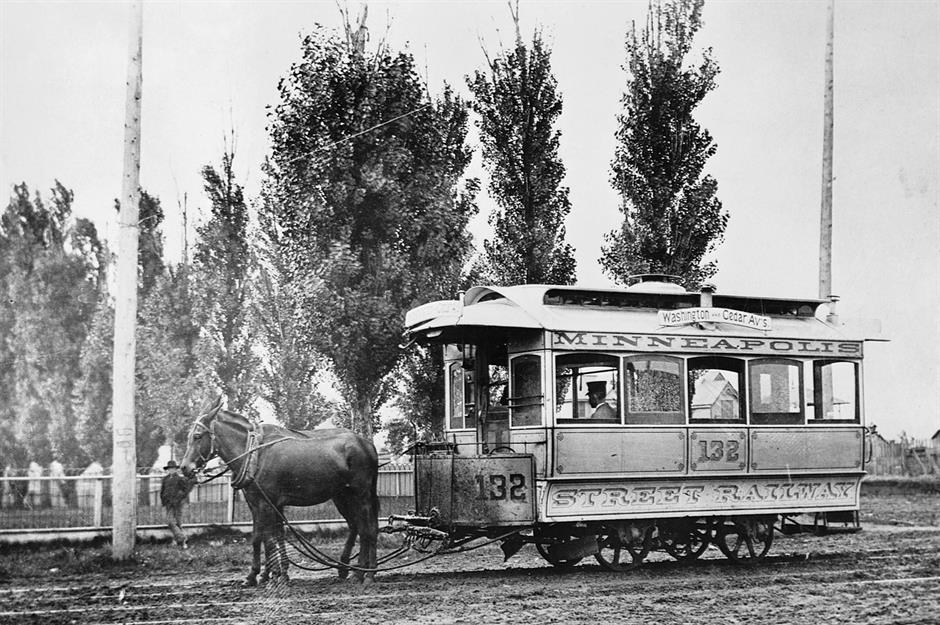
Known as trams in some parts of the world and trolleys elsewhere, streetcars were a widely used form of public transport in the USA a century ago. In fact, more than 17,000 miles (27,360km) of streetcar tracks existed in American cities in the 1920s. Electrified streetcars operated on urban streets but the rise in motor cars' popularity and flight to the suburbs were factors in their decline.
Scroll through this gallery to discover the fascinating history of streetcars in the US and some places where they can still be ridden...
1862: Streetcars on Canal Street in New Orleans, Louisiana
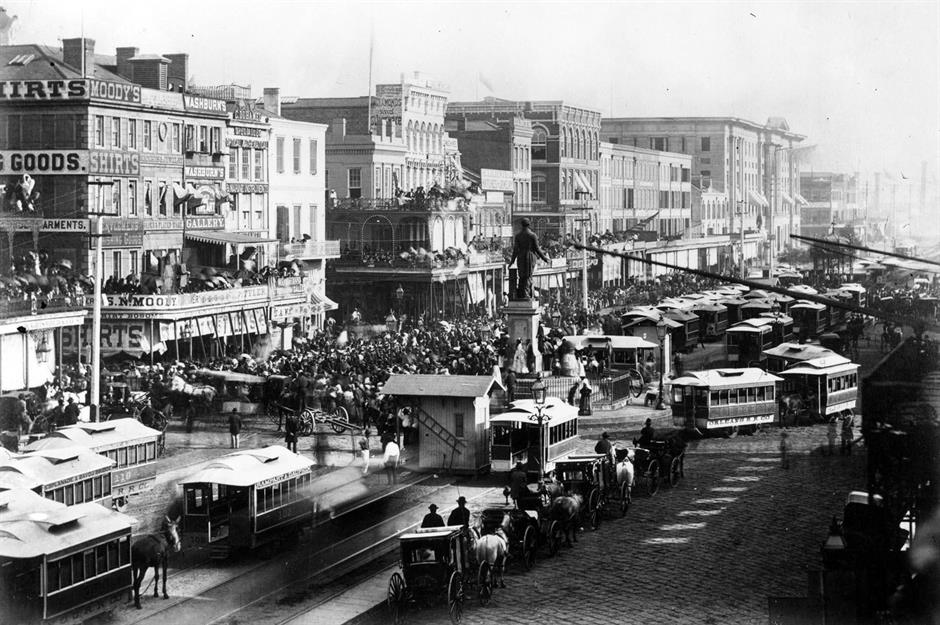
This photograph from 1862 shows Canal Street in New Orleans, today the boundary of the French Quarter and the Central Business District. The scene invokes sounds of hollering, hooves and everyday activity.
Motor vehicle traffic is often blamed for clogged streets in urban America, resulting in the demise of streetcars as the 20th century progressed. Yet this scene serves as a reminder that cities were busy long before motor cars were commonplace.
1880s: Cable cars in Chicago, Illinois
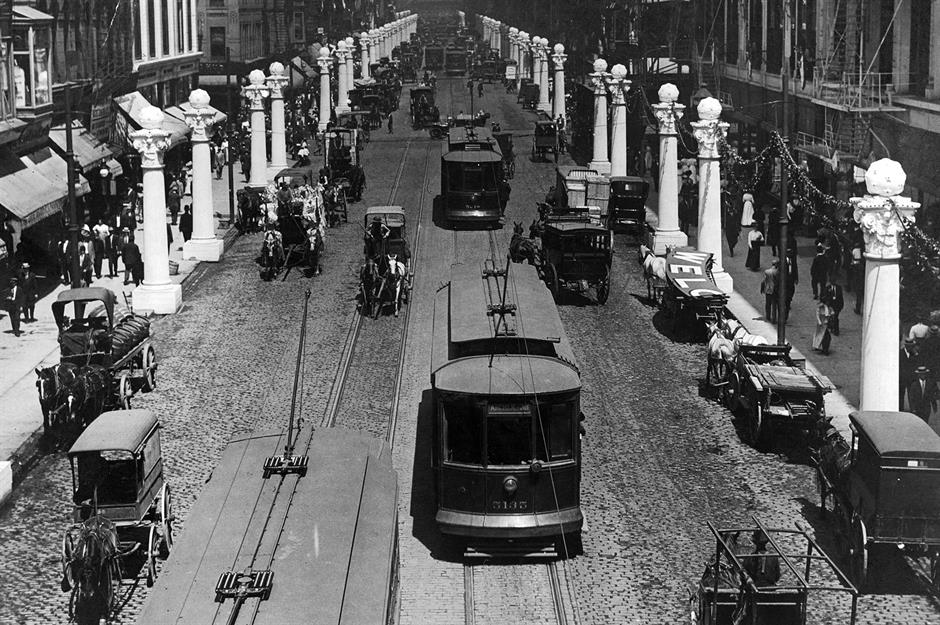
With Van Buren Street decorated for a parade honouring the Knights Templar Conclave in August 1880, an electrified cable car can be seen operating on the streets of Chicago, Illinois. Horse-drawn carriages share the streets with the cable cars, which were replaced with streetcars from 1890.
The phased task was eventually completed in 1906, the year that the city's Cubs and White Sox baseball teams contested the World Series.
Follow us on Facebook for more travel inspiration and tales from history
1885: Streetcar on Pennsylvania Avenue in Washington DC
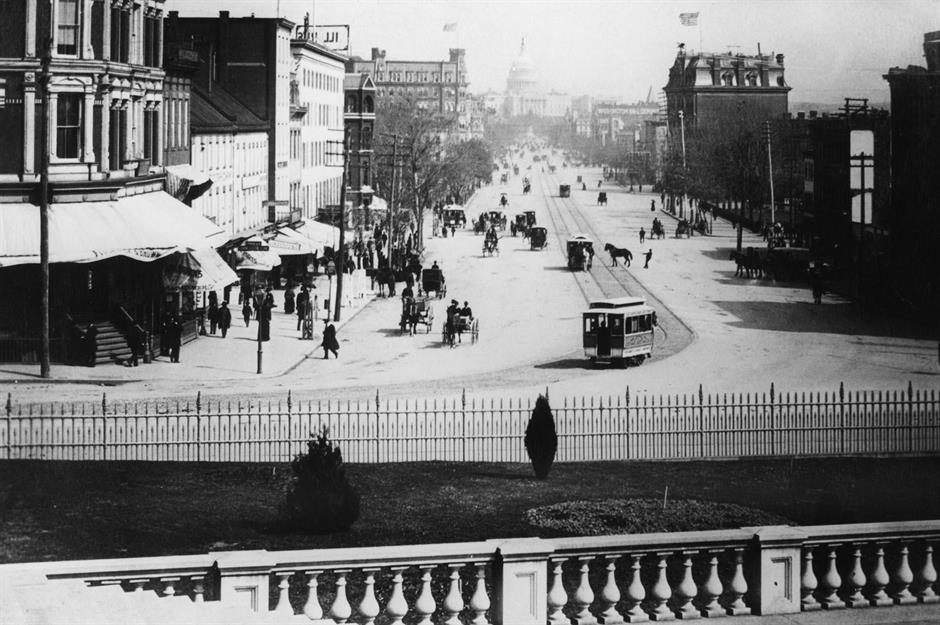
This view from the steps of the US Treasury along Pennsylvania Avenue towards the Capitol is from 1885. In that year, President Grover Cleveland appointed Daniel Manning as the Secretary of the Treasury with government currency a pressing issue.
Inflation following World War I meant that streetcar companies’ contracts for five-cent fares, while also requiring them to maintain streets experiencing increasingly heavy use (and damage) from motor vehicles, contributed to their decline.
1886: Horse-drawn streetcar in Minneapolis, Minnesota
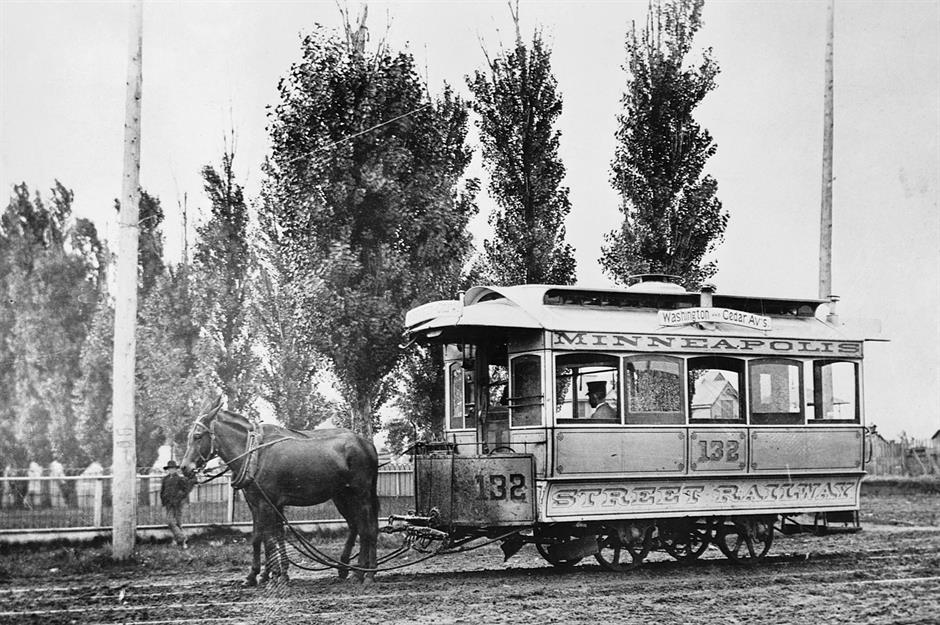
This photograph dated to 1886 shows a horse-drawn streetcar near Layman's Cemetery in Minneapolis, Minnesota. Known as a 'Bobtail' horsecar, it was operated by the Minneapolis Street Railway. The company's franchise was cancelled in 1921 by the State of Minnesota.
Streetcars were removed from Minneapolis in 1949 as part of cost-cutting measures. By the late 1940s, movement from city centres into suburbs accelerated the decline of streetcars across the USA.
1890: Streetcar on Broadway in St Louis, Missouri
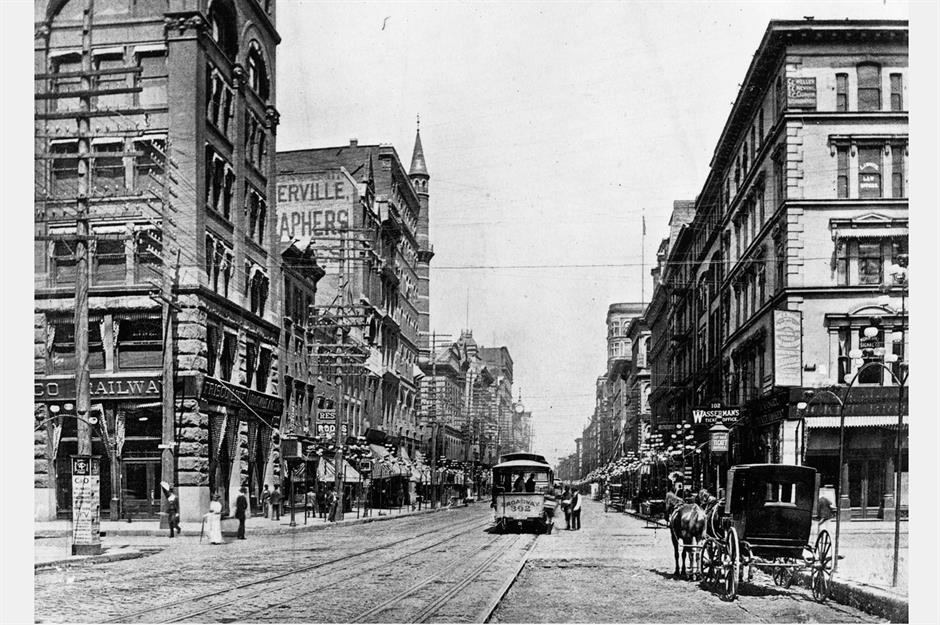
This photograph shows a streetcar on Broadway in St Louis, Missouri, around 1890. The prospect of relatively smooth journeys, fares lower than horse-drawn carriages and a reliable, regular timetable of departures helped make riding streetcars a popular mode of mass transport at a time when there were few viable alternatives.
Present-day visitors to the city known as the 'Gateway to the West' can experience rides on a historic streetcar, the Loop Trolley, from May through to October.
1894: Passengers riding a streetcar in Cincinnati, Ohio
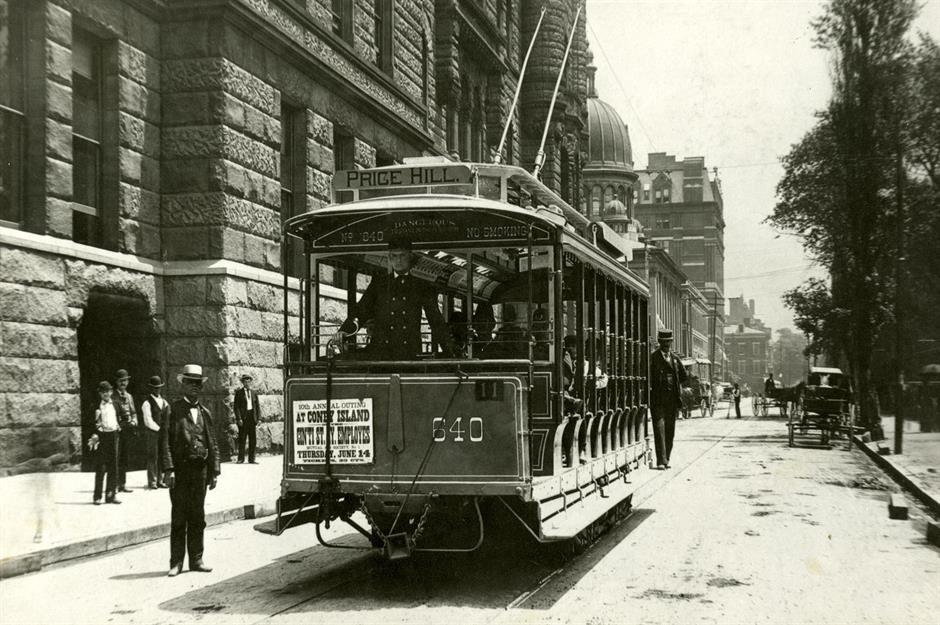
Passengers ride a streetcar on the Price Hill route in Cincinnati, Ohio, in 1894. On warm summer days, the open-sided vehicles were undoubtedly a pleasant way of getting about – less so when it was wet or cold.
Cincinnati had more than 200 miles (322km) of streetcar tracks and more than 100 million passengers a year, which was the city's chief form of public transport from the 1880s into the 1940s.
1900: Streetcar on Main Street in Buffalo, New York

The scene shows an open-sided tram on Main Street in Buffalo in 1900. Prominently displayed pricing on adverts hints at the sensitivity towards fare rises.
As the century progressed, contracts locking in five-cent fares resulted in companies making losses and, over time, a lack of investment in infrastructure and the decline of services.
1900: Street crossing in Pasadena, California
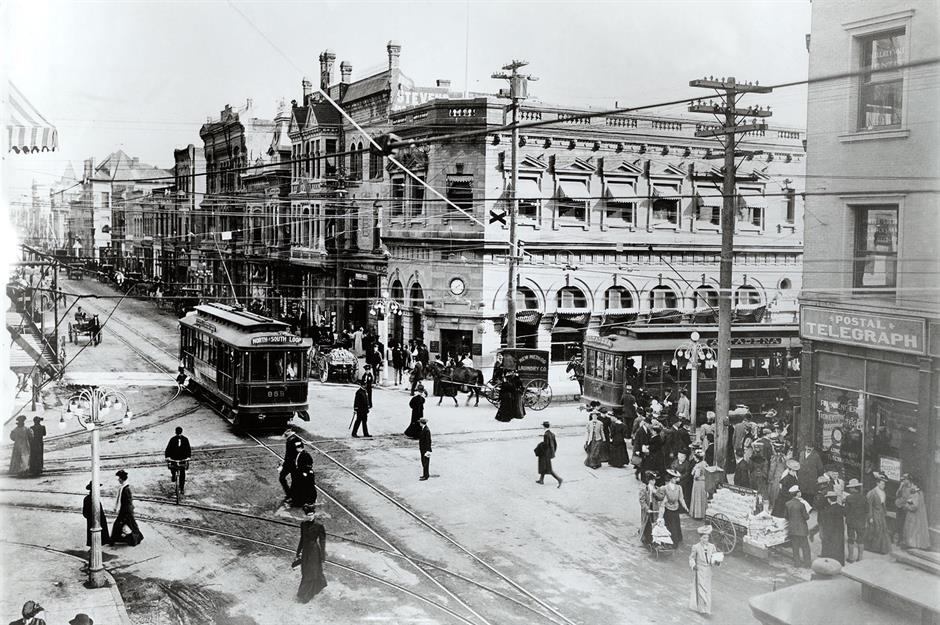
This view of the crossing at Fair Oaks Avenue and Colorado Street in 1900 highlights how pedestrians, streetcars and other forms of transport shared America's streets. This was more than a decade before traffic lights and signals at pedestrian crossings were operational.
Impatience and human error inevitably led to collisions, which contributed to the streetcar gaining a reputation for being a dangerous form of transport and a menace on city streets.
1901: A streetcar excursion from Denver, Colorado
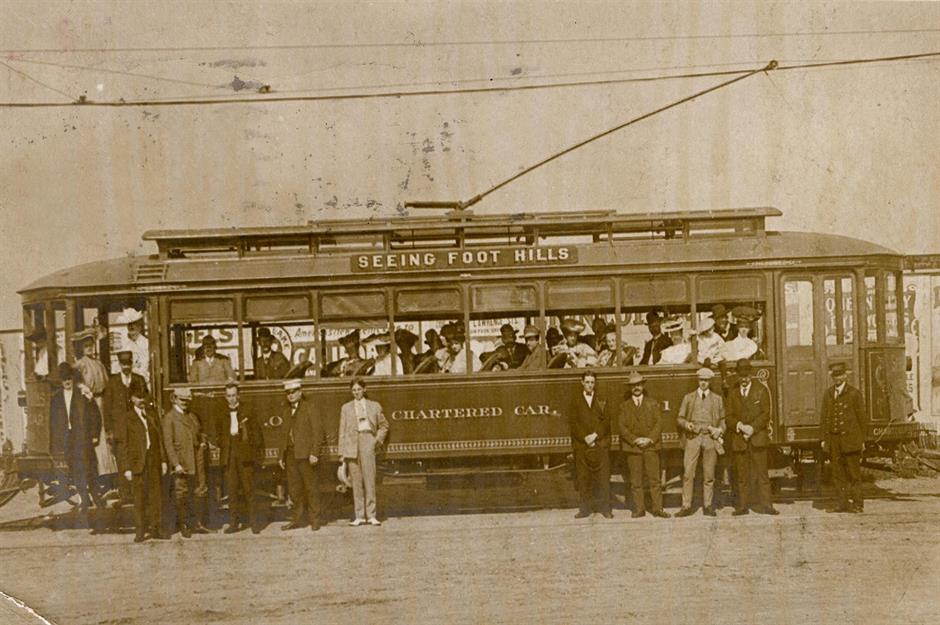
People are seen here enjoying a 1901 excursion into the foothills of the Rocky Mountains from Denver. The Denver Horse Railroad Company launched the city's first public transit service in 1872, and a booming population prompted major network expansion over the following decades.
Growth stalled during the 1893 recession, but by 1915 the system carried more than half of all travellers to and from the central business district. Coverage peaked in 1917, and by 1951 streetcars had been replaced by buses and trolley coaches.
1901: Streetcar with a cowcatcher in Grand Rapids, Michigan
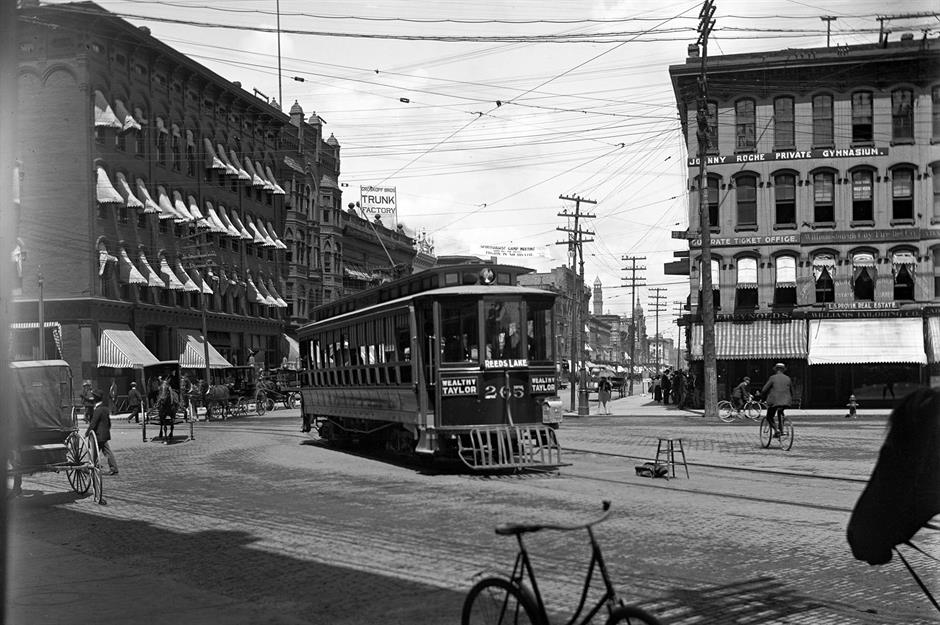
This image was captured on 5 August 1901 at Canal Street and Campau Square in Grand Rapids, Michigan. We can see the streetcar to Reeds Lake, which was then the site of an amusement park, rounding the corner on its tracks.
A bicycle is parked in the foreground. Anyone who rides a bike will know it can be challenging to cycle on streets with embedded rails. As other forms of transport became increasingly common, rail streets grew increasingly unpopular, leading to more calls for their removal.
1902: Electrified streetcar in Dayton, Ohio
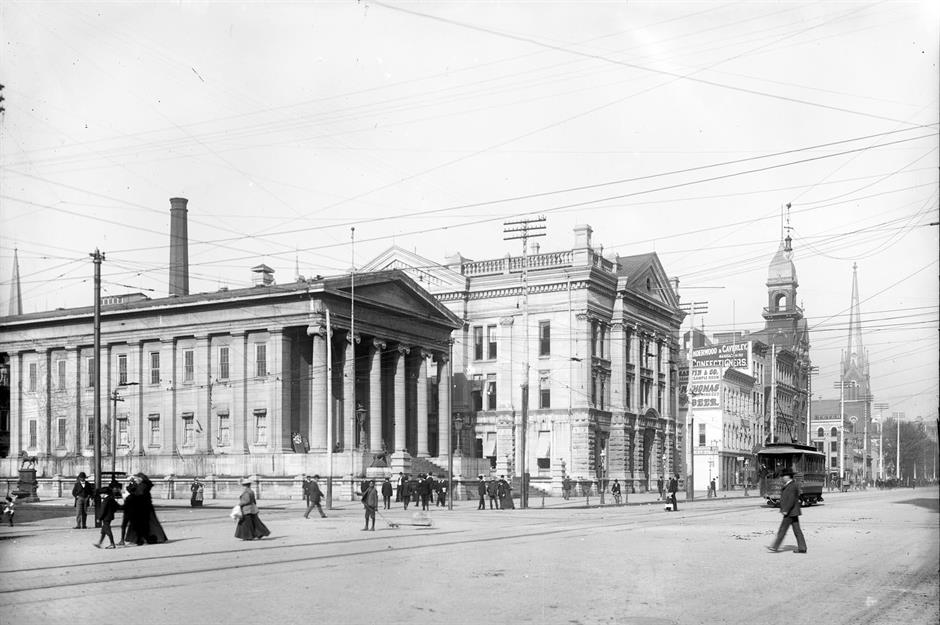
A streetcar runs in front of the Montgomery County Courthouse in Dayton, Ohio, in 1902. The Dayton Street Rail Road introduced horse-drawn carriages in 1870 and services on Dayton's first electric line started 18 years later. The passenger compartments had incandescent lamps.
As the 20th century progressed, the number of automobiles on city streets increased and trolleybuses were introduced in 1933. Echoing developments in many other American cities, the last electric streetcar operated in Dayton on 23 November 1947.
1905: Open-sided streetcar in Honolulu, Hawaii
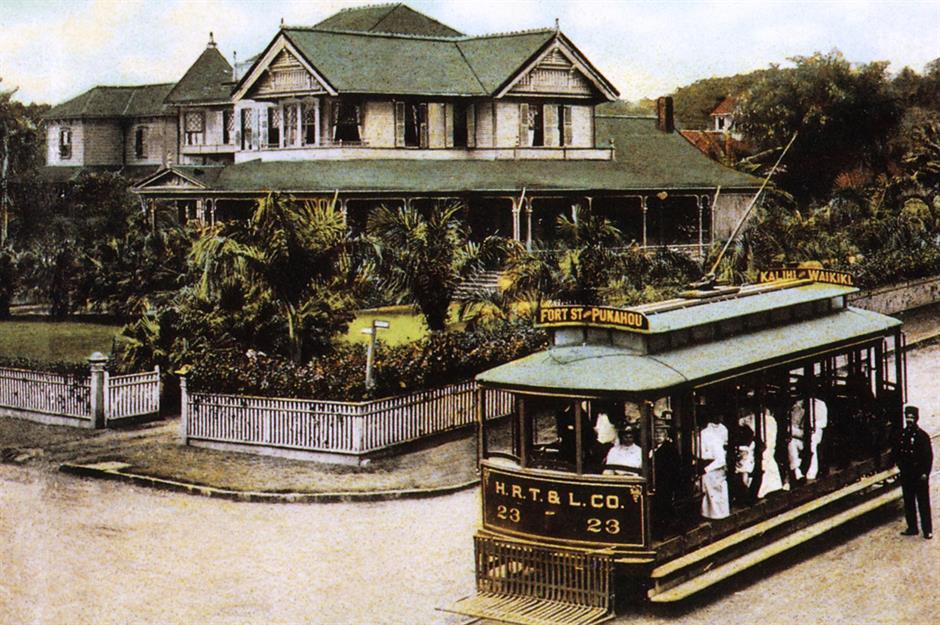
A streetcar heading to Fort Street is seen in front of a residence on Wilder Avenue in Honolulu, Hawaii. The scene is from a coloured picture postcard dating from 1905, before Hawaii became a state.
Authorities approved the streetcar system on the same day in 1898 that Hawaii was annexed as a US Territory. The number of annual passengers peaked in 1923 at 20 million. By the end of 1941, buses had replaced the streetcars.
1900s: Streetcar with netting in Norfolk, Virginia
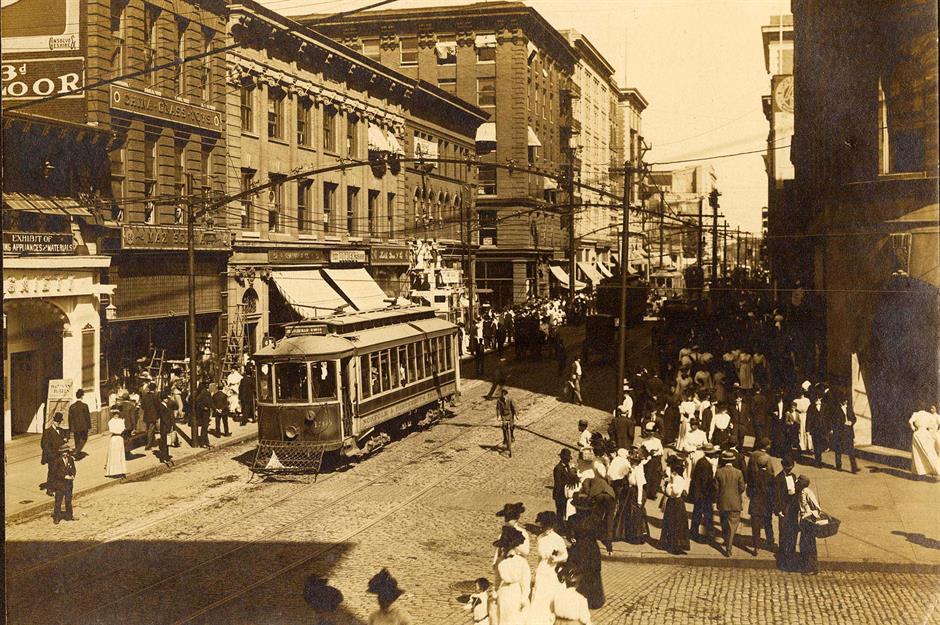
This streetcar on Granby Street in the 1900s features netting on its front fender. Once streetcar lines were electrified, there was a greater danger that pedestrians might get run over than when horses pulled cars.
Companies looked into a range of methods to reduce risk to people on city streets, including angled cowcatchers that could remove obstacles from lines. The use of cowcatchers could result in people being pushed upwards towards the driver, so netting was widely preferred.
1910s: Streetcar on the streets of Winfield, Kansas
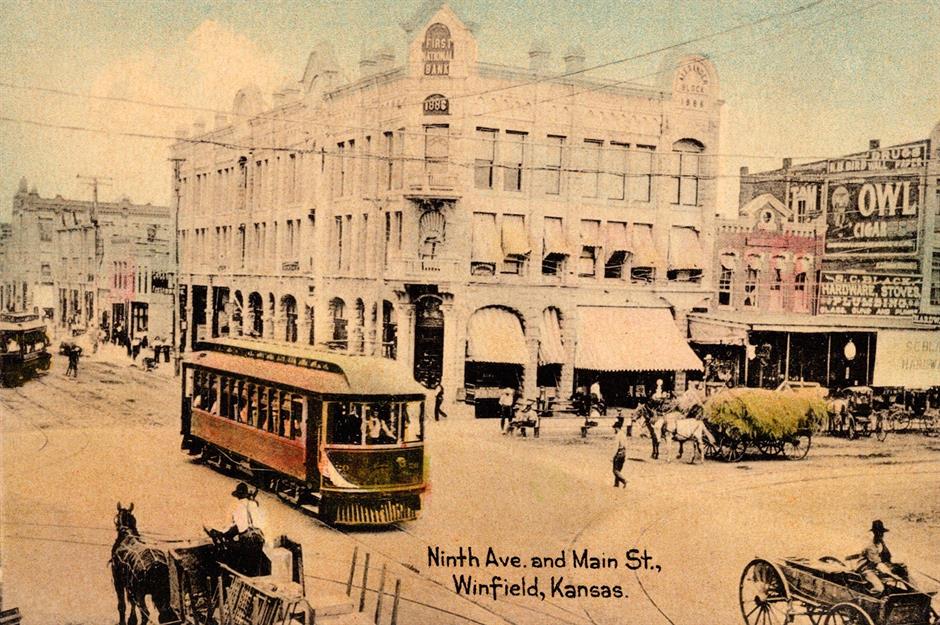
By the 1910s, the proliferation of streetcar networks across the US resulted in even small cities having services, including Winfield, Kansas. Approximately 43 miles (69km) southeast of Wichita, Winfield’s population was still below 8,000 in 1920, around the time that streetcar usage peaked.
This picture postcard shows that at a time when farmers and local business people were still using horse-drawn carriages to transport goods, local streetcars were electrified and multiple lines existed.
1917: Army during the streetcar strike in Bloomington, Illinois
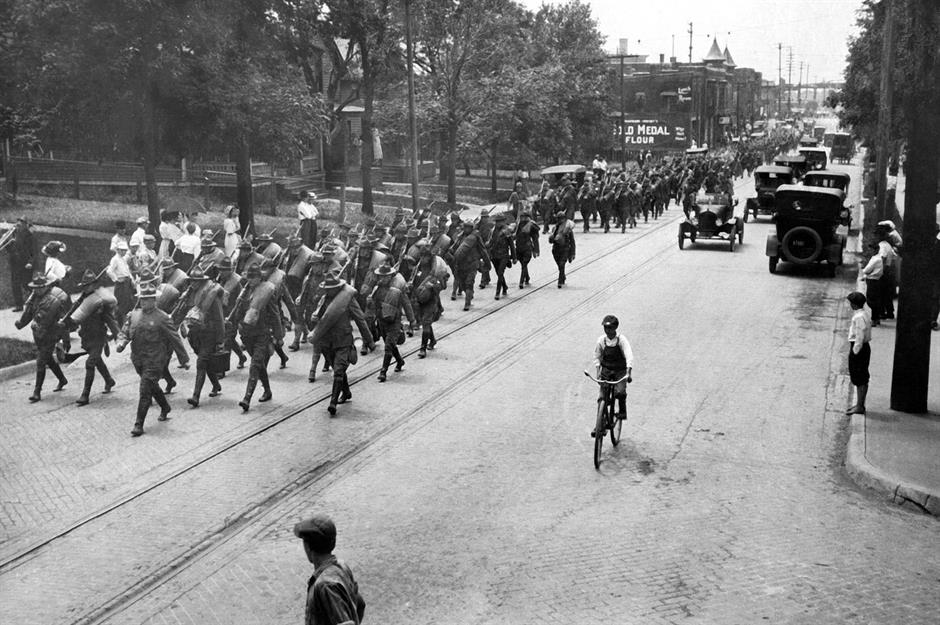
On 9 July 1917, the Second Illinois Artillery regiment marched on the streets of Bloomington to maintain order during a strike that impacted the operation of streetcars. The USA had joined World War I just three months earlier, and the country was experiencing growing tensions as workers sought improved wages and conditions.
Service disruptions and inflationary pressures increasing ticket prices were among the factors that led to Americans seeking alternative forms of transport to streetcars.
1919: Overturned streetcar in Washington DC
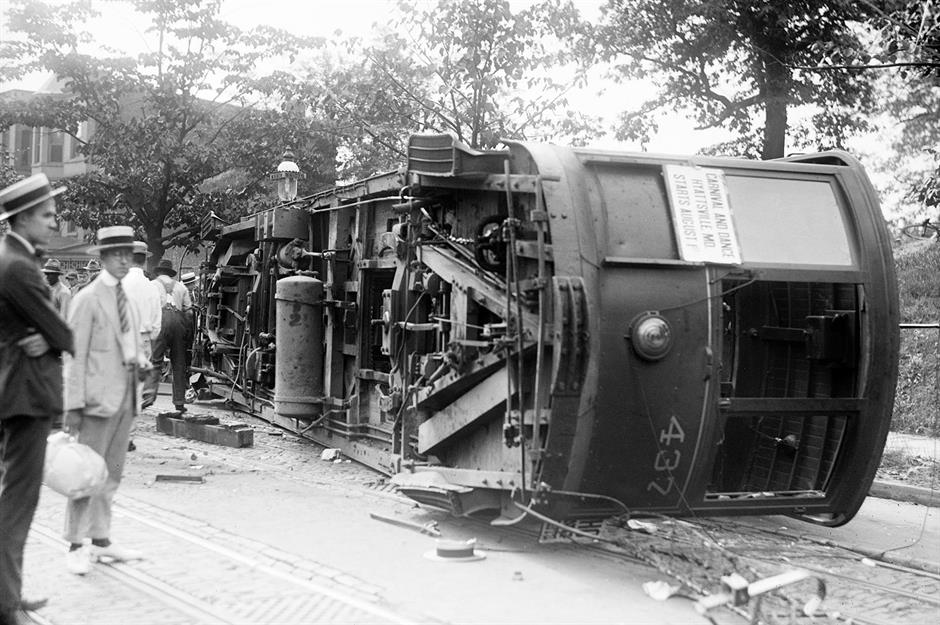
An overturned streetcar in Washington DC in 1919, around the time that the mode of transport was peaking. Derailments inevitably sparked concerns about the safety of streetcars. Collisions with pedestrians and vehicles resulted in negative press too.
Poorly enforced regulations and rapid urban population growth led to overcrowding, which in turn contributed to accidents such as falls. The deadliest incident was in 1900 in Tacoma, Washington, when 44 people perished.
1926: Safety slogans on a streetcar in Joliet, Illinois
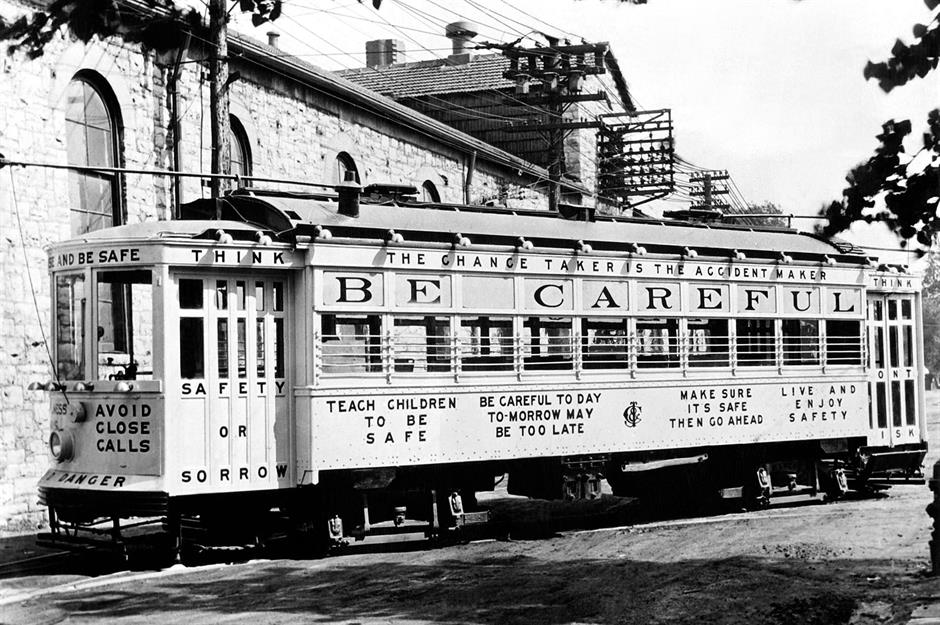
In 1926, the city of Joliet, Illinois, utilised a white streetcar with slogans to raise awareness of safety issues as part of its 'Safety First' campaign. As cars became increasingly common on America's roads, the slogan 'Be Careful' was particularly appropriate for streetcar passengers as they boarded and disembarked on busy streets.
1929: Special service in Brooklyn, New York
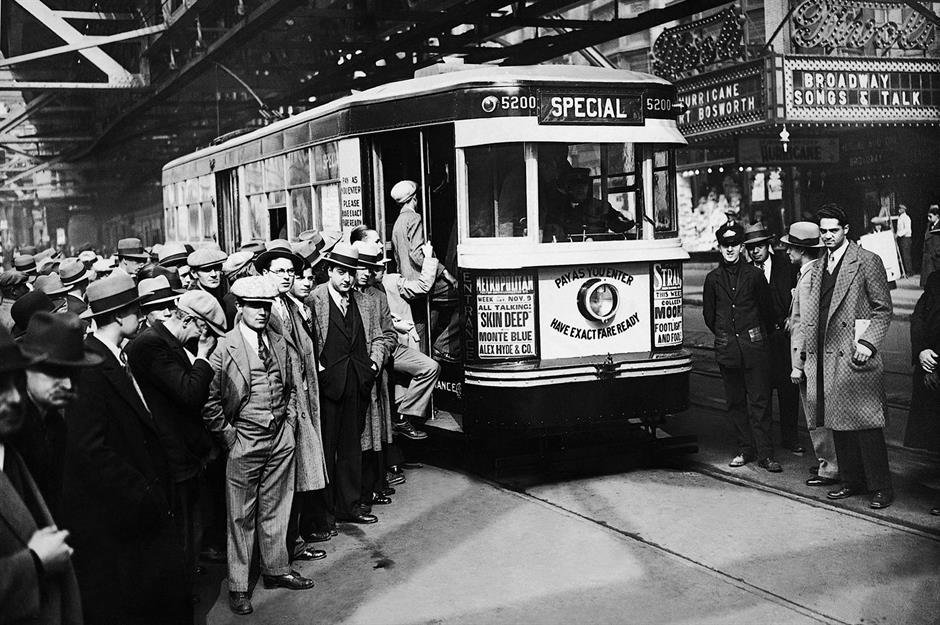
This scene captures a scrum of passengers attempting to board a special service car of the Brooklyn and Queens Transportation Authority heading towards Brooklyn Borough Hall in 1929. By then, annual passenger numbers on streetcars in America had begun to decline.
The Great Depression began in 1929 and widespread job losses meant a downturn in commuting. People looked to save money wherever possible, and walking rather than using transport became part of the solution.
1940: Streetcar on Brooklyn's 9th Street, New York
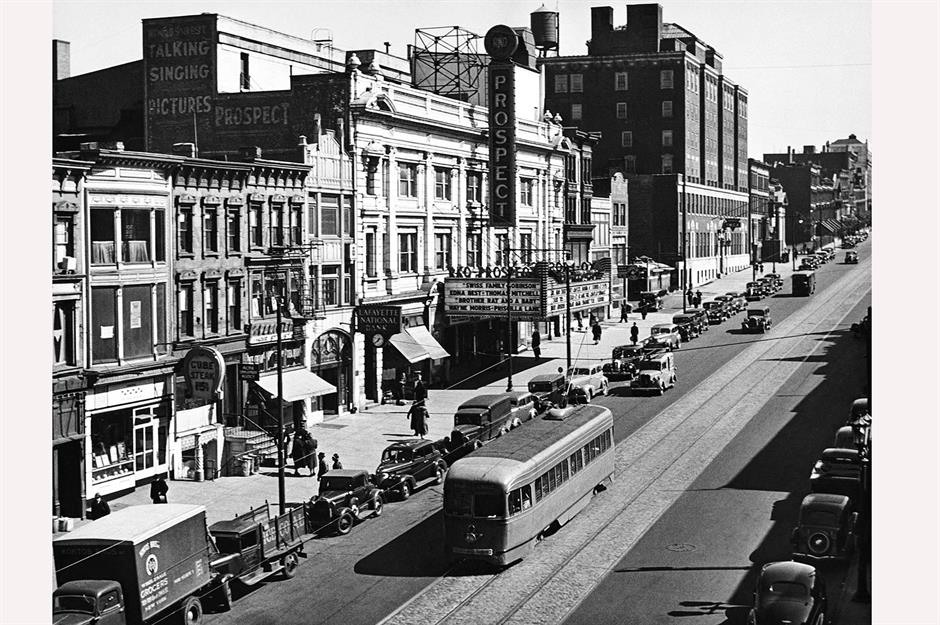
This scene from 9th Street in Brooklyn, New York, illustrates how streetcar designs evolved. Early designs left passengers open to the weather but this one is enclosed. That helped ensure safer rides, minimising the risk of people jumping down or falling in moving traffic.
The transport network in Brooklyn resulted in the local baseball team gaining its ‘Trolley Dodgers’ nickname. By the time the Dodgers franchise moved to Los Angeles in 1958, streetcars had ceased operating in Brooklyn: their last journeys were on 31 October 1956.
1940: A busy Broadway in Los Angeles, California
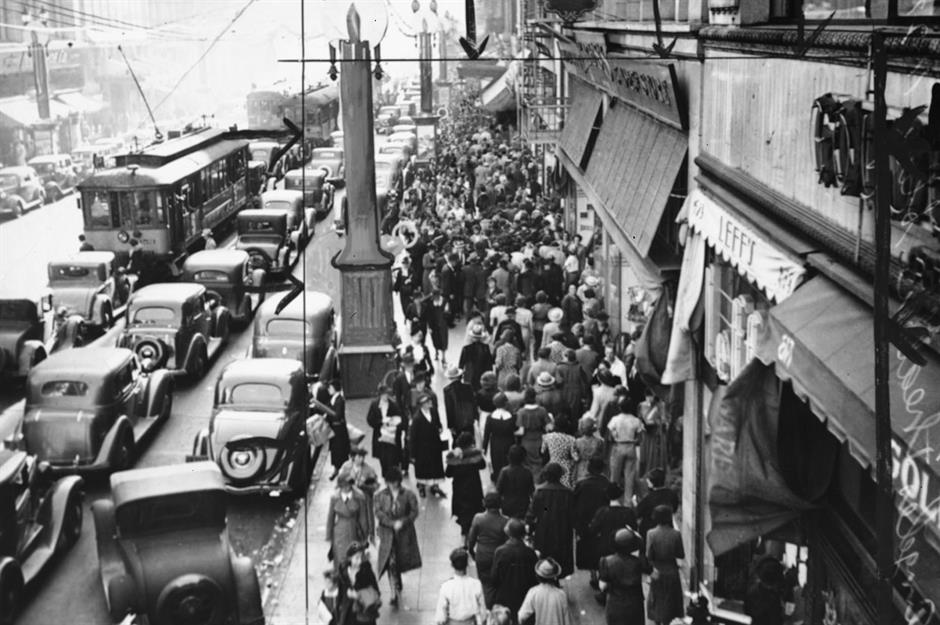
This busy daytime scene shows pedestrians on Broadway in Los Angeles, California. Meanwhile, streetcars are sandwiched between bumper-to-bumper cars. Slow-moving traffic was reported as severely delaying the city's streetcars as early as the 1920s.
Frustrations with delays were a factor in people seeking alternative means of transport. By contrast, their use continued in cities such as Chicago, where streetcars had dedicated lanes.
1950s: Powell-Mason Turnaround in San Francisco, California
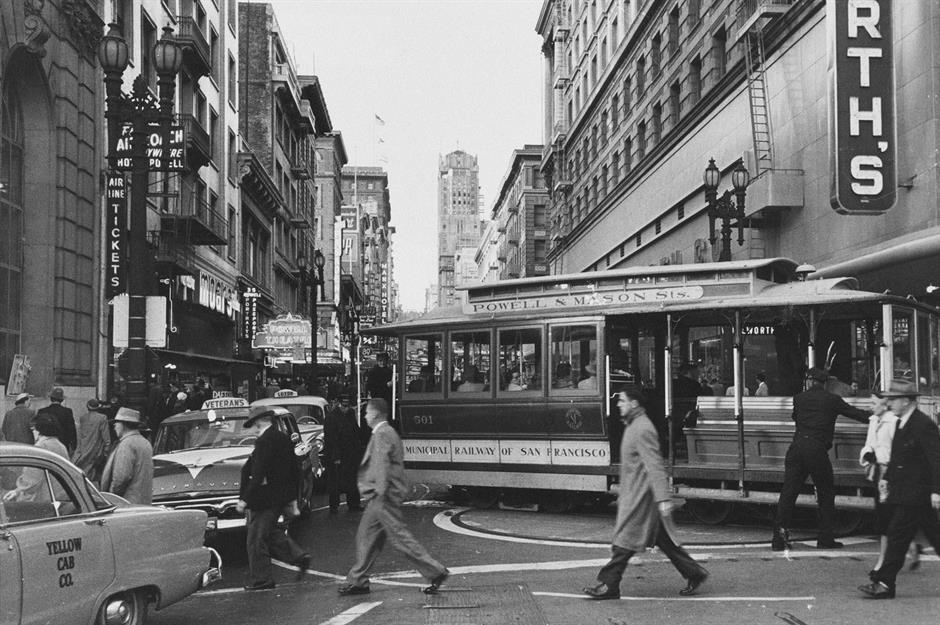
This busy scene from the mid-1950s shows taxi cabs and pedestrians while a streetcar's direction is changed in San Francisco. The turnaround on the Powell-Mason Cable Car Line is a revolving platform and it remains in use to this day.
The system is so named because of cables below the street that pull the manually operated cars. The system was invented in the city and was designated a National Historic Landmark in 1964.
1960s: Racial tensions in Detroit, Michigan
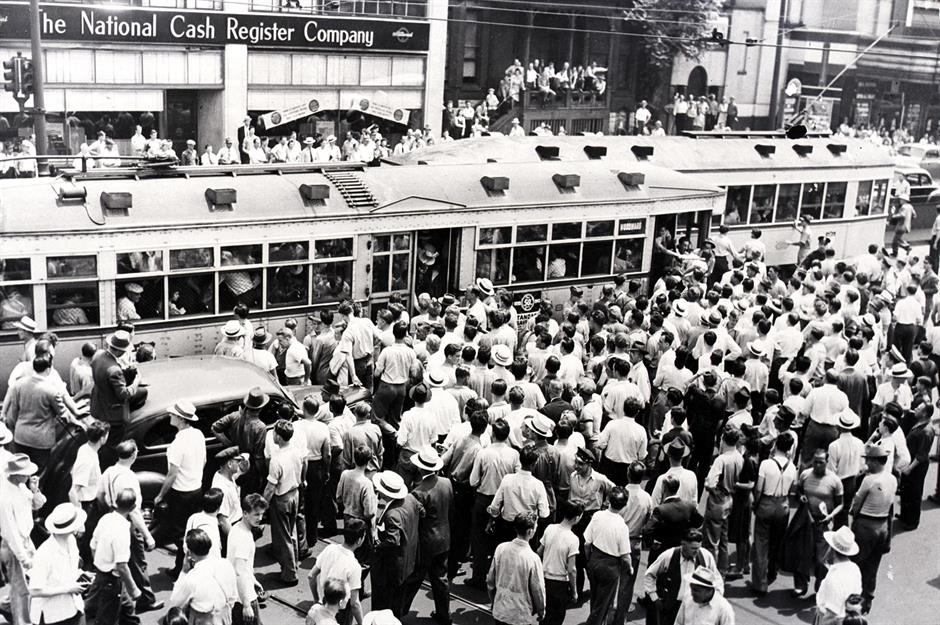
This photo captures a streetcar during race riots in Detroit. The mob focuses its wrath on African-American passengers. Detroit's automotive industry played a major role in the decline of urban public transport in the USA.
As the 20th century progressed, cars provided an alternative to riding public transport and contributed to congestion blamed for slowing streetcars in city centres. Meanwhile, public transport became an emotive battleground in the civil rights struggle, notably in the Montgomery Bus Boycott of 1955 and 1956.
1960s: Streetcar in Boston, Massachusetts
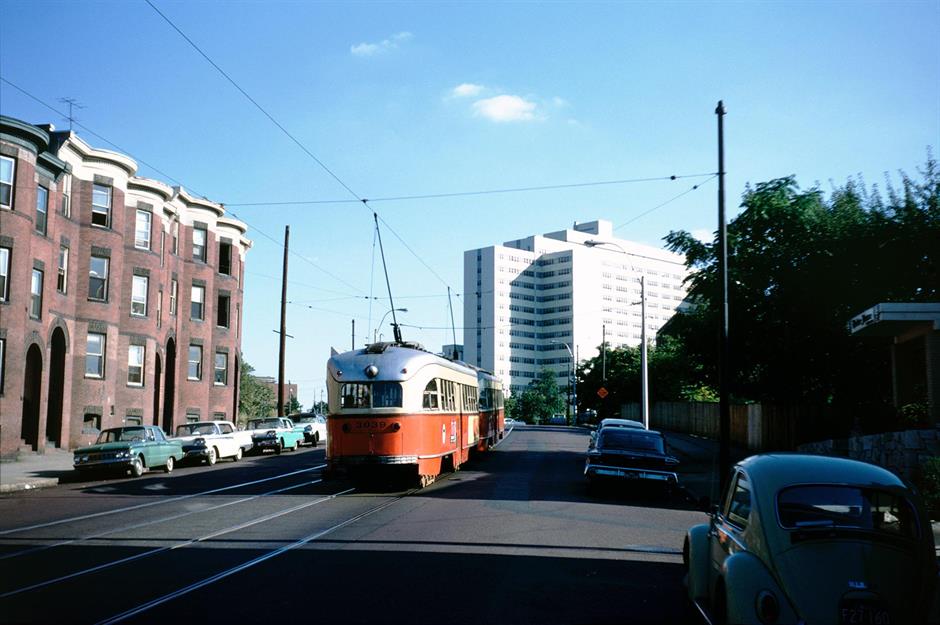
This streetcar is seen running in Boston during the 1960s. The US Government approved the expansion of Boston's streetcar fleet during World War II, signifying that they were still regarded as a viable form of public transport.
The Massachusetts Bay Transportation Authority's (MBTA) Presidents' Conference Committee (PCC) streetcars operated on the city's streets from 1951 to 1985. Large 'picture windows' provided passengers with fine views along their routes.
1975: Streetcar operating in Pittsburgh, Pennsylvania
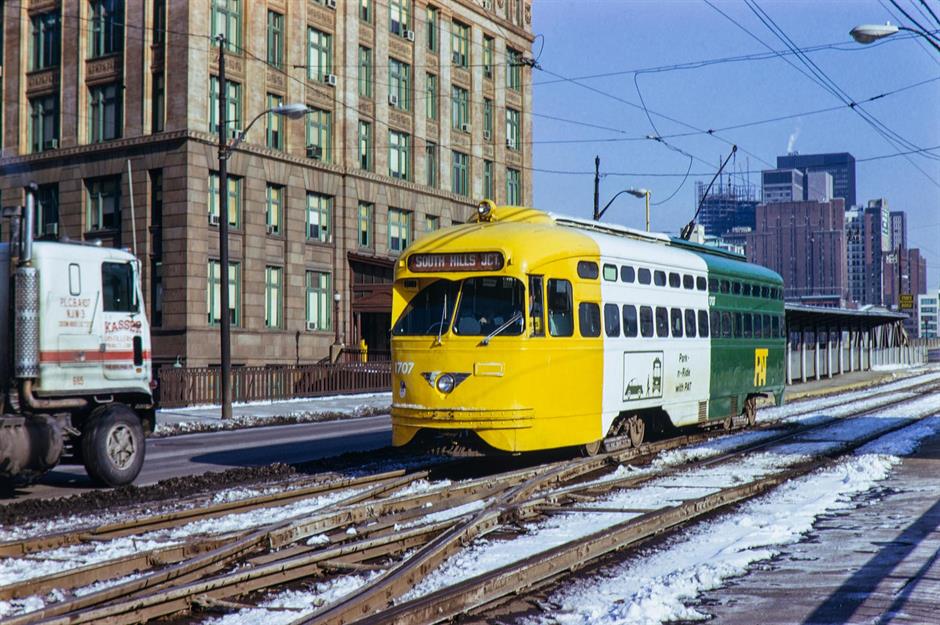
This photograph, taken on Valentine's Day in 1975, shows a streetcar running to South Hills Junction in Pittsburgh. Around the time of World War I, in the heyday of streetcars, the Pittsburgh Railways Company operated over 600 miles (966km) of tracks and 99 different lines.
An embargo on oil exports to the US in 1973 and 1974 caused petrol prices to quadruple, increasing the appeal of public transport. This streetcar bears an advert for the city's park-and-ride scheme.
2010: Heritage streetcar in Little Rock, Arkansas
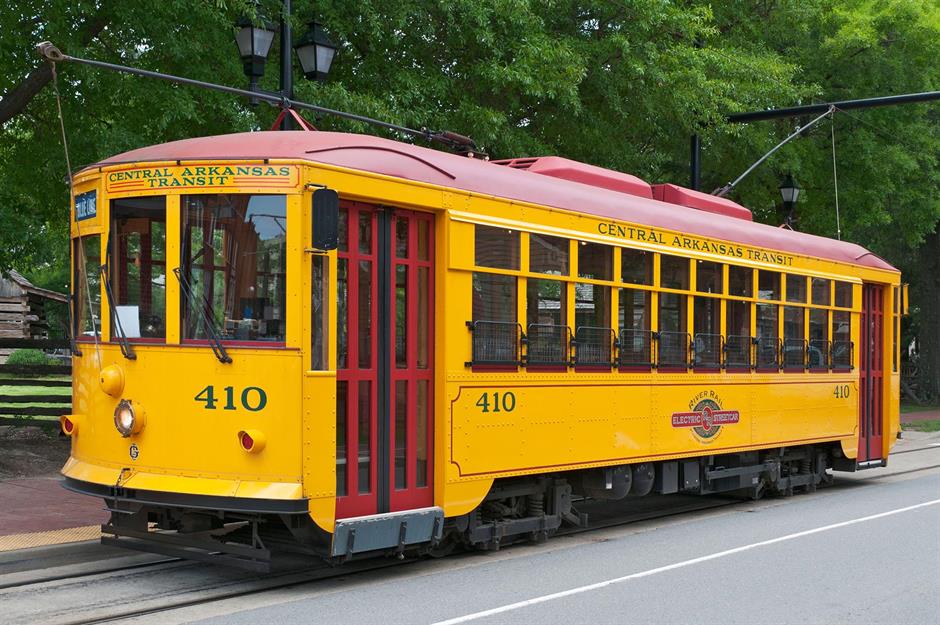
Heritage streetcars have seen an upswing in operation over the past couple of decades. In 2004, the River Rail Electric Streetcar began running between Little Rock and North Little Rock. In 2015, it was rebranded as the Metro Streetcar.
Operating along a 3.4-mile (5km) stretch of track, the route connects points of interest including the Clinton Presidential Center, Little Rock's River Market, the Statehouse Convention Center and North Little Rock's Argenta Arts District.
2014: TriMet MAX Light Rail in Portland, Oregon
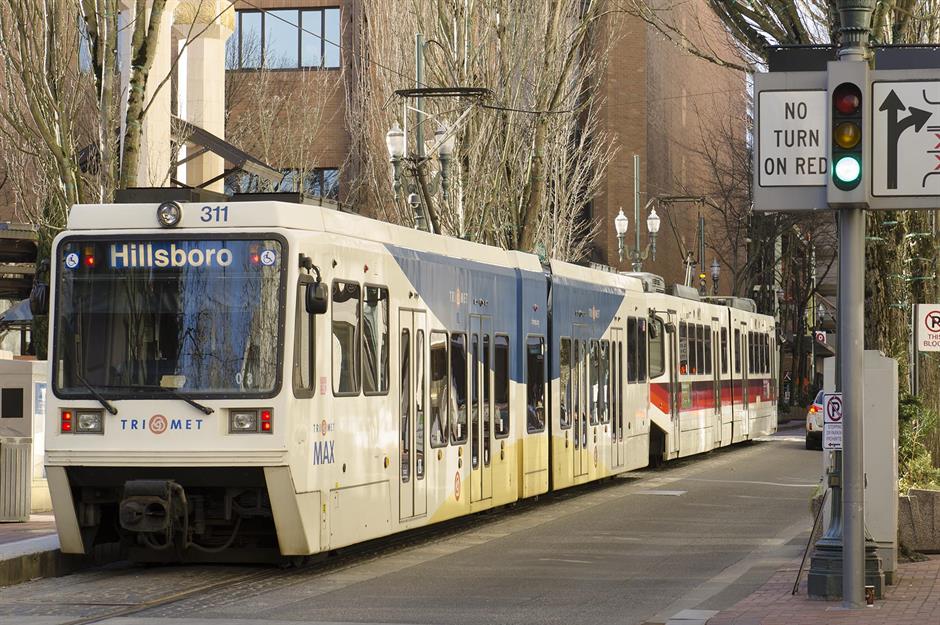
This image shows testing of the TriMet MAX Light Rail system in Portland, Oregon. Decades after cities ripped up rails, the environmental benefits of streetcar and tram services in urban hubs became apparent.
Siemens-built S70s were customised for use on lines in Oregon's TriMet district and are wheelchair accessible. Signalling a move away from car-first policies, the Orange Line's Bridge of the People was specially designed for use by cyclists, pedestrians and public transport.
2016: M-Line heritage streetcar in Dallas, Texas
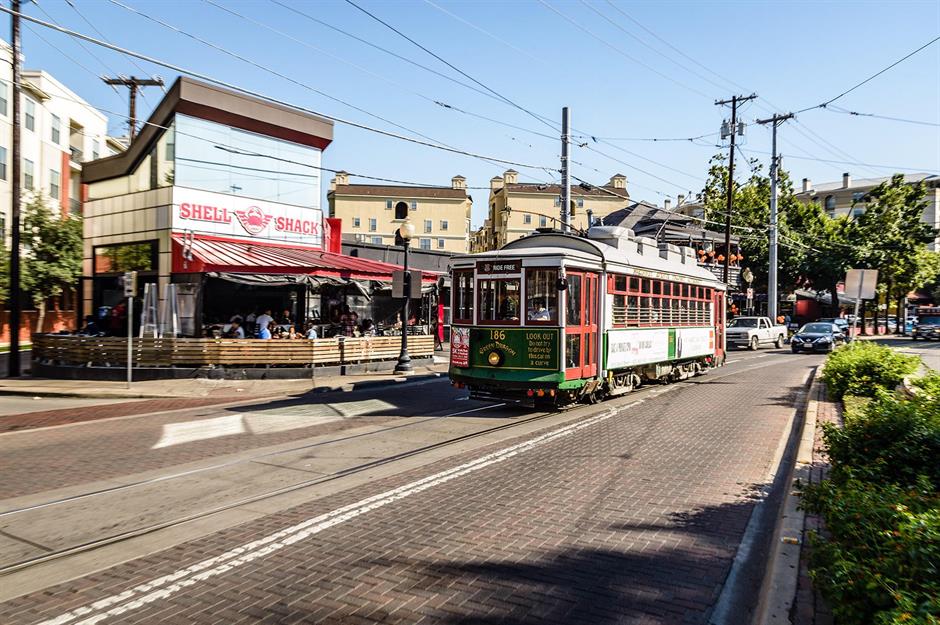
The first streetcars in Dallas were mule-drawn when service began in 1872, running along Main Street between the Houston and Texas Central Rail depot and Downtown. Electric streetcars took over in 1890, and the network grew to nearly 200 miles (322km).
The fleet reached almost 400, but declining ridership led to its closure in 1956. Heritage streetcars returned in 1983, and today the M-Line carries over 400,000 passengers annually.
2016: St Charles Streetcar in New Orleans, Louisiana
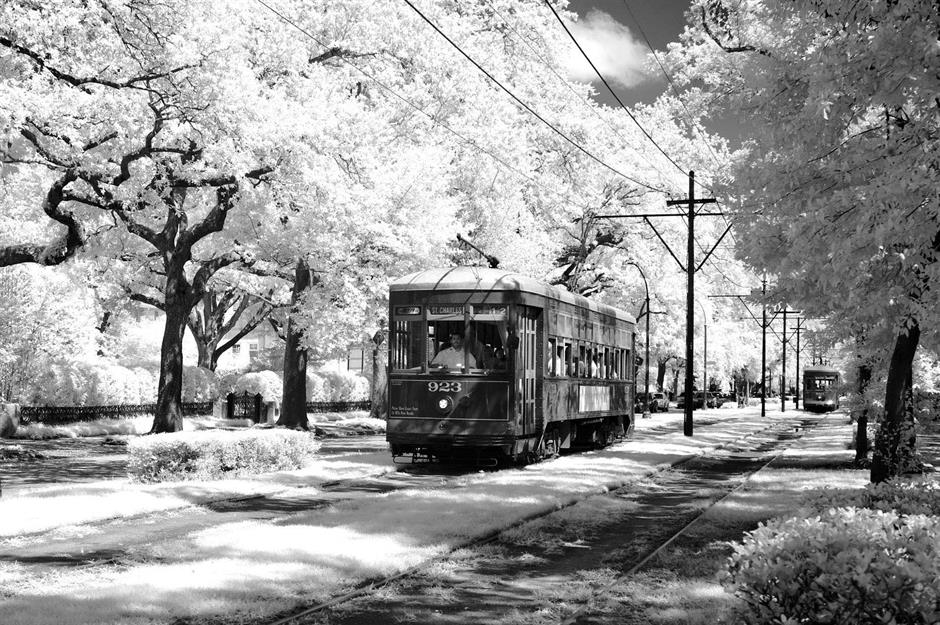
The St Charles Streetcar is a popular tourist attraction in New Orleans. Louisiana. It is the longest continually operating streetcar line in the world and its history can be traced to 1835.
The green streetcars are well-used. In Tennessee Williams' 1947 play, A Streetcar Named Desire, the character Blanche DuBois famously arrives at her younger sister's apartment using the city's iconic means of transport.
2016: F Market and Wharves line in San Francisco, California
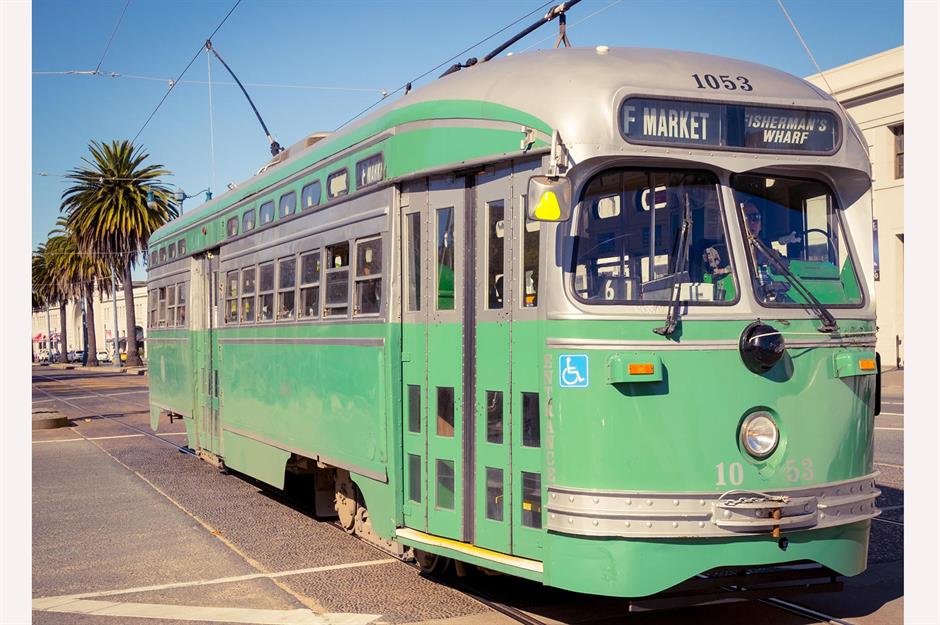
Keep clothing long enough and it will come back into fashion. Similarly, historic forms of transport often experience renewed interest. The F Market and Wharves line in San Francisco runs between the Castro District and Fisherman’s Wharf.
Only historic equipment is used on the line, which attracts tourists as well as local users. Retired equipment from San Francisco is used, as are streetcars from elsewhere. Here a car formerly used by Brooklyn and Queens Transit Corporation is seen at the Embarcadero.
2022: MATA Trolley in Memphis, Tennessee
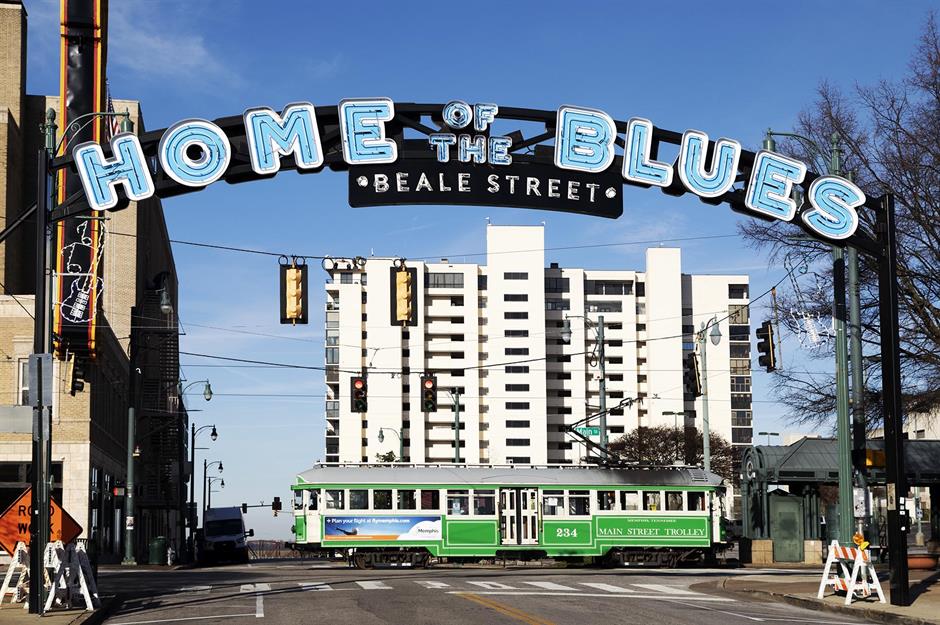
Memphis’ heritage streetcars, run by the Memphis Area Transit Authority, offer a budget-friendly way to see the city’s Downtown.
Beyond these nostalgic lines, cities like Salt Lake City (with its S-Line, opened in 2013), Atlanta, Cincinnati and Oklahoma City have all introduced modern streetcar systems. Once a relic of the past, could streetcars be a transport mode of the future?
Comments
Be the first to comment
Do you want to comment on this article? You need to be signed in for this feature